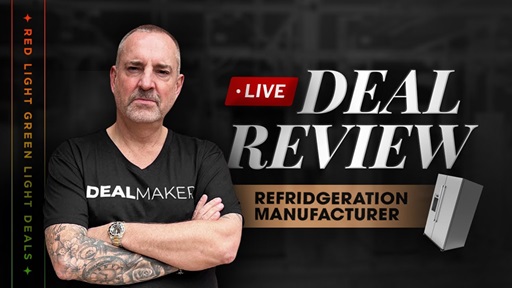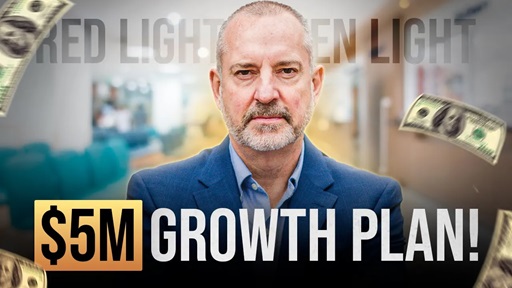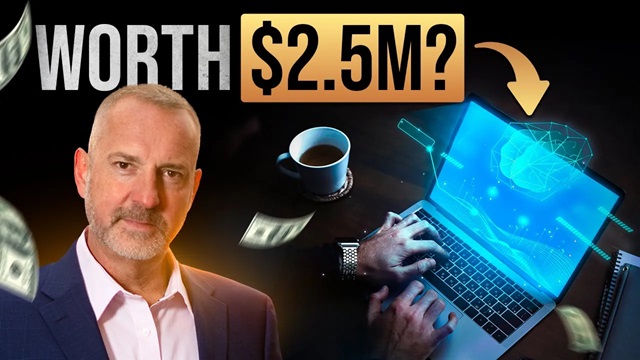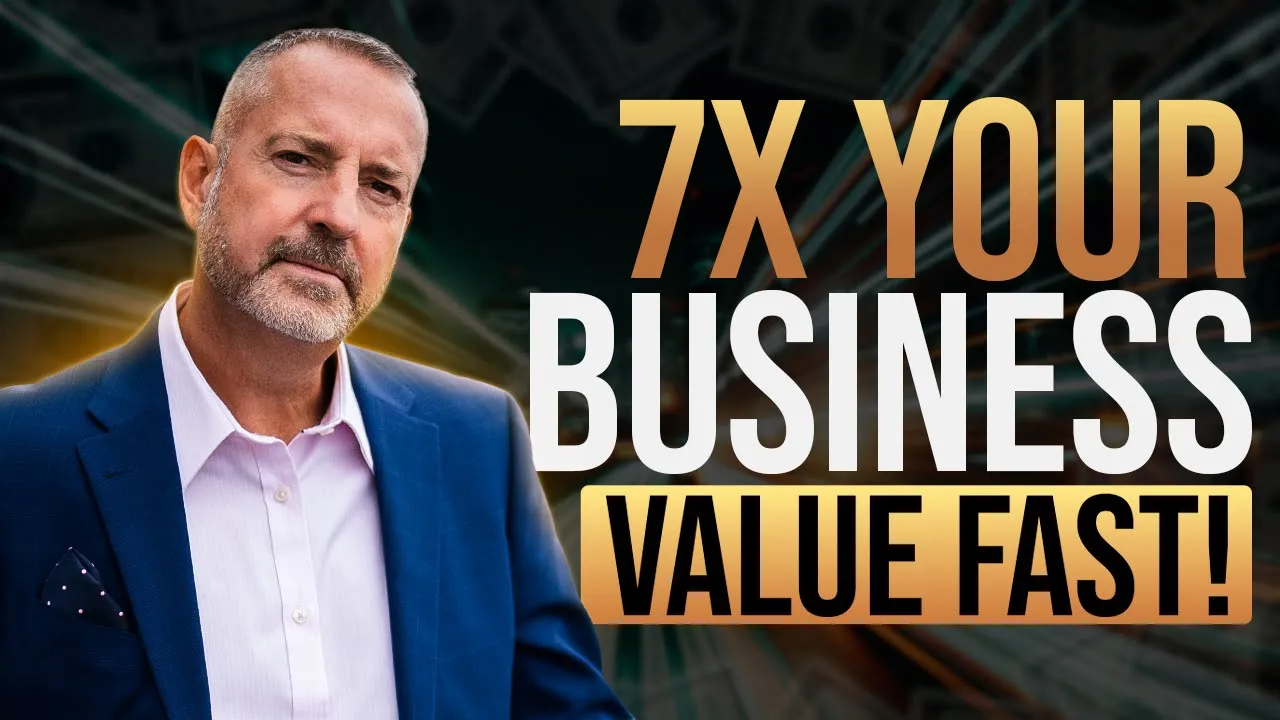The Inside Scoop on Buying a Promotional Products Business
The Inside Scoop on Buying a Promotional Products Business
In this insightful podcast episode, Carl Allen explores the nuances of acquiring a promotional products business—a sector with substantial growth potential and unique operational dynamics. Featuring a deep dive into a real-world case study, this episode sheds light on evaluating, financing, and scaling a $15.5 million promotional business deal.
The company under discussion, established in 1986, boasts a robust legacy with over three decades of serving business-to-business (B2B) clients. Generating $14.9 million in revenue and $3.6 million in adjusted EBITDA last year, this East Coast enterprise offers a broad product range, including branded merchandise, uniforms, and eco-friendly solutions. Their diversified portfolio and vertical integration, encompassing production, warehousing, distribution, and decoration, make it a compelling acquisition target.
Listeners gain an insider’s perspective on the factors driving the promotional products industry, a $26 billion market experiencing steady growth. Carl and the presenter discuss the company’s strengths, from its debt-free operations and strong supply chain to its proprietary ecommerce solutions and long-standing customer relationships. They also explore areas for growth, such as diversifying the client base, implementing subscription models, and enhancing vertical integration for operational efficiency.
The episode doesn’t shy away from addressing potential challenges. From understanding cash flow cycles to ensuring the smooth transition of relationships tied closely to the owner, the conversation is packed with actionable insights. Financing strategies take center stage, as Carl discusses structuring earn-outs and negotiating terms to balance valuation concerns and mitigate risks. Key questions about sustainability—such as understanding revenue surges and inventory turnover—highlight the importance of due diligence in acquisitions.
Beyond financials, the podcast dives into the softer aspects of dealmaking, such as evaluating the seller’s motivations and transitioning a legacy business. The seller, a passionate industry veteran, offers to stay on temporarily to ensure a seamless handover, adding value to the deal.
For aspiring buyers, this episode is a masterclass in analyzing business acquisitions with a sharp focus on growth opportunities, operational intricacies, and market potential. Whether you’re a seasoned entrepreneur or new to business acquisitions, Carl’s expert guidance and the presenter’s candid reflections provide a wealth of knowledge for evaluating similar opportunities in the promotional products space.
Full Transcript:
Okay. So this is my project Mon Mothma, and this is a promotional products company.
Let’s see if we can get this to work.
Alright. So some key information, they are list they are located on the East Coast.
They were founded in nineteen eighty six.
The owner is currently seventy, and he’s looking to retire, but he’s not distressed or Any health is he’s he is healthy. He has no health issues.
Their revenues last year were fourteen point nine million.
Adjusted EBITDA was three point six, and they’re asking fifteen point five million.
So this is, pretty much in my lane. I have a lot of cross sector type of capabilities, but I’ve had thirty plus years in retail, ecommerce, hospitality, and manufacturing, space. So and this kinda covers a lot of those bases.
It’s really, really interesting kinda company.
They have all these different types of products and different different categories. They have apparel and backpacks and whatnot, and then the branded merchandise, uniform uniforms and wear workwear.
They have ecommerce sites that they sell for each cost some of the customers.
They have eco friendly products as well as a rewards and recognition program programs.
So a little bit company overview.
They specialize in supplying a full range of promotional products and marketing services.
The promotional products, represent a twenty twenty point six billion dollar industry that has demonstrate consistent growth in both utilization and merchandising.
The company offers about over three hundred thousand products, including OEM, custom manufactured products with a thirty five year history of working with some of the top companies in the US.
There are some of their key features.
They have an established and reliable supply chain for products.
They have vertical integration in all areas, production, warehousing, distribution, and in house decoration.
They have a strong balance sheet with, quote, unquote, zero debt, strong cash flow, and potential for, continued growth.
There’s no limit to potential customers in the business to business focus that has been the company’s strategy for thirty five years.
They have established brand name and outstanding reputation for dedication to customer service.
So some high level numbers for the market.
It’s beginning of twenty twenty three. There were twenty six point one billion dollars in revenue.
They have had annual the market has annual profit of two billion and with a one point one percent increase increasing, revenue growth.
See. So some of the growth opportunities in this business can diversify the client base to include more corporate larger corporate clients within the US and internationally, Implement a subscription based service where existing proprietary software can be sold and generated and generate in, recurring revenue.
Let’s see. Expand inventory management to respond to increased demand.
We can explore options to reinvest revenues and additional equipment to increase vertical integration competencies.
So some of the strengths and weaknesses on this, they do have some managerial people in place, although I would would need to get a GM.
They have systems and training in place, and the owner is willing to stay on and train a new GM to ensure smooth transition.
He does want his his price and his terms, which we know that’s not gonna work. He wants fifteen point five million with tenant tenant closed and seller financed the rest.
All the relationships are with the owner even though he’s willing to help transfer them to the buyer, and this is a broker deal.
Let’s see.
So this is an overview of some of the, competitor landscape. They have this these are the top largest ones, but there’s many different levels of of these types of businesses. It’s very diverse.
So it depends on which lane you’re swimming in.
Not gonna read all that for you.
Let’s see.
So the the team is, right now, just me with a potential GM.
Like I said, beginning a retail, ecommerce, hospitality, and and manufacturing experience, and that goes across many different, sectors.
The the general manager the the seller actually has a few potential candidates that, he’s willing to to train to take over. I didn’t have anybody in mind, which is kinda good.
Yeah. I don’t know yet if I would need anybody else partnering, depending on the the situation.
Open to that. We just have to see.
This is high level snapshot of the one sheet, which I’ll get to in a second.
And, basically, I’m just looking for feedback, whether this is a viable deal, this is out of reach.
And if it is viable, how would you suggest financing it?
That type of thing. Whether it’s annuity or or whatnot.
And that is it.
Very good.
Do you, do you have the one sheet that you can pull up?
Sure can.
Alright.
Can you walk us through this?
Let’s see. What do you wanna know first?
Alright. Let let’s see here.
They’re they’re The the the big thing that sticks out is the the revenue growth. So so walk us through what happened from twenty one to twenty three.
Do you know why the business had grew from from six million to to almost fifteen million in in two years?
Honestly, that to that granular level, no, I don’t.
Okay. Gotcha.
I just I know their their I have some numbers for the last their fiscal year ends in September. So I do have some twenty four numbers, but not a full year, obviously.
But they’re they’re doing pretty good, up until this point. And he’s you know, I don’t remember what he said was his projected for this year, but he’s he’s he’s not stopping. Let’s just say that.
He’s not distressed. He’s he’s willing he wants to retire, but he’s, you know, loves doing what he’s doing. And so there’s not, like, immediate urgency to get out, which is, you know, kind of unfortunate from my my perspective, but he does love his his employees, his legacy, and all that.
And he’s it’s his baby. He’s been doing this since the eighties, so he grew it from from nothing.
So he’s just crank they’re just basically cranking it, and they’re going into different different avenues to get to get as much revenue as possible.
Yep. Gotcha. Yeah. I would just wanna understand what what drove that growth because, you know, that’s that’s very significant. And, you know, is that sustainable?
What led to that? All those types of things. Mhmm. Because what what looks like is is happening is they’re they’re pricing the business off the the last year. Yeah. You know, the the best year.
You know, I I would have concerns over that. That’s in these types of situations, that’s where I usually put in in, some sort have some sort of earn out associated with it. Yep. So taking an average of, you know, whatever the adjusted EBITDA is, whether that be a weighted average or just, you know, a general average across the the three years, coming up with a reasonable valuation with that and then, you know, bridging the gap with an earn out to to, to that last year’s earnings, for for the asking price for sure, just to cover some of the risk of the the growth and and those types of things. So I would definitely factor that into any any sort of offer that I would I would put in for this. Mhmm. The the other question I have is the ad backs continue to to grow each year.
You know, no ad backs in twenty one up to almost a million dollars in twenty twenty three. So what are all those add backs, that that are in there, and are they are they valid or not?
Yeah. They had a lot of family members, auto.
He took more money out. I don’t remember what this negative one was, but yeah.
Gotcha.
Alright. So alright. So they’re pay officer salary. So that’s all his pay then that or his or her pay.
That basically picks up the back. Okay.
Gotcha. Okay.
Very good.
Yeah. Interesting business.
The only other thing that I would have on this is, you know, I would question the, you know, bit of some questions around the actual accuracy of the the financial statements. Looking at the balance sheet, the the AP number is negative.
Yeah. I asked him about that. He said they they prepay their suppliers because this yeah. So he’s I mean, that’s how, you know, like, they don’t have a lot of of debt waiting because they prepay a lot of their orders. They they order stuff from their suppliers ahead of time, and a lot of them have prepayments. And this was just, like, one snapshot of whatever it was in February.
So Okay.
Perfect. That that makes sense.
That that stood out to me too. I was like, wait a second.
Yeah. So the motivation is pretty low. Can you talk us about, you know, why the seller’s looking to sell?
He’s he’s he’s seventy. He wants to retire, but he’s not, like, desperate to retire. He loves what he’s doing. He just wants to make sure it’s it’s handed off to somebody that that can, you know, take over and and, you know, he doesn’t wanna he’s not in a fast hurry.
He said he’s healthy. He’s not you know, there’s not nobody nothing’s going on. He even told me he’s like, healthy as a horse. It’s not no.
So it’s like, okay.
I get it. Some of, you know, like like, the target people are the people that are sick or people in the family sick, but, you know, they don’t have any of that stuff.
So Gotcha.
Super You mentioned family works in the business. Is he just paying family members as to get the tax benefit, or does he actually have people within his family that are actually within key roles within the business?
I think this was a child, one of his children, but the other one his wife actually works in the business, but I think that’s combined in the officer salary. I don’t I have to dig back into it. It’s been a while. But I believe this was, like, a non, nonworking member of the family, and then his wife is part of this. Because she’s, like, she’s, like, a ten percent. She’s ninety percent. She’s ten percent.
And I don’t remember what the the ratio was, but, but like I said, I think they’re Got it.
Paying a child.
You have to replace both of those people? Are they working the business?
They are working the business, and the and the owner said that he can he considers his job something that two people would need to take over.
So I I I think that’s why I put, like, that’s why I put this adjusted in here Okay. Based on what they had told me.
So maybe that’s true, I don’t know.
Are they willing to stay on for some period of time?
Yeah. The the owner said he’d be willing to to hang around in in the least train a new GM. So it’s it’s which is good. He even had people in mind that would be able to to jump in that role.
Even though in in the company themselves, they have maybe a VP. I don’t know if there’s a VP, but there was some kind of a officer that could temporarily do it, but he just he didn’t think that they could do it full time type of thing.
So, unfortunately Got it.
Okay. David, you you’ve got a number of questions in the chat. Why don’t you why don’t you come on and ask those?
Yeah. So I I I really I wanna dig into a little bit more, Tammy, on on exactly what it is that this business does. You know, and I guess I’ll I’ll start with my last question, that that I put, and that is, what makes this company different than literally the twenty seven other promotional products companies that are within five miles of my house?
You know, what you know, are are there are there contracts? Are is there special IP? Do they have their own proprietary designs?
Are they manufacturing, or is it all just It’s it’s kinda like a combination of of all of them.
They have they have, contracts with major companies to do uniforms and the like and then promotional products, whatever that may be. They have one major customer that is that is, like, their top customer, and they have a special team that works for them specifically. I don’t know what they actually make for them, but the they’ll these pieces they basically source out all the material, whether it’s shirts or bottles or what have you. And then they bring it in house, and they print everything on it. They have they do embroidery. They do screen printing. They do all those types of things.
They have, they have eco based products. They have but they that this guy is he’s into that. That’s his one of his wheelhouses is I think he’s got some kind of a degree in something science y. I don’t remember.
He was going off on it. I’m like, okay. So he’s into the eco products, you know, that kind of stuff. And and he started back in the day, you know, building up somebody else’s business, and they they turned him around and said, no.
We don’t want you anymore. So he did his own. So, yeah, he’s he they have the b to b, contracts with some major some major customers. And that’s something you could, you know, build off on or go to pretty much any any b to b company to do.
K. And and what does the sales organization look like? Is it is it employees?
Do the employees have customer contact now? Or or or they have independent contractors out repping the product?
What and what They have they have employees in house.
I think most I think there’s, what, fifteen of them total at the moment.
There may be a part time one or two part time, but most of them are full time.
And I don’t know what the I don’t know if they have a dedicated sales team or not. I don’t think so.
And they’re and they’re pretty much a a distributor.
K.
And so you said they’re they’re they’re actually doing the screen printing and the embroidery in house, but the rest of the stuff, they’re then the the the the the pins, the mugs, the the the the desk ornaments, the tchotchkes, all of that stuff, they they’re they’re outsourcing that, probably overseas.
Yeah. I’m not sure. I I know that they buy the the products that they like, so they they order say say somebody orders, like, five hundred t T shirts embroidered or, you know, embroidered with a logo on it. They’ll go and, you know, go to Nike and say, hey. We want these these shirts, and then they’ll bring them in house, and then they put the logo on them, that type of thing, or wherever they get them from. Because they updated contracts with some big manufacturers of of, you know, apparel, and then they’ll turn around and put the decoration on it in house.
Okay.
And so they’re they’re big enough that they’re able to source direct and therefore probably price Yeah.
And then and this gentleman has, some key I guess, he’s got a lot of relationships with distributors. A lot of them maybe in China too, which is kind of odd, but whatever. They have them.
I I would expect a lot of them are.
Yeah. And he’s got those those types of relationships which would need to be transferred to the buyer.
So Yeah.
And and then the other thing I would again, you know, you mentioned, you know, with with the, the negative payable because they’re basically prepaying for a lot of their, a lot of the product they’re ordering or at least putting up a deposit.
I I would I would get a really clear back to the theme of the last call, right, or the last, presentation.
Get a clear understanding of the cash conversion cycle of this business. Do do they get a deposit from their customer Right. That that turns around and funds that deposit to the vendor, or are they funding that vendor deposit and carrying the receivable?
They also have a fair amount of inventory.
And since this is probably all if if not bespoke design, at least bespoke imprinted. So what is the inventory just work in progress, or do they actually have stuff sitting there? And if it’s stuff sitting there, how much of that is fresh, and how much of that is, you know, the the the the really cool environmentally friendly product he designed six years ago. And Exactly. Sitting in the warehouse.
Exactly. Right? Is it, like, a quick turnaround or if it’s just in between? It’s like, yeah. How how fast is the turnaround?
Yeah. I mean, they’re they’re showing sixteen days of inventory. So that, it makes sense to me that it would be potentially just work in progress. I mean, that’s Yeah.
That’s that’s two weeks worth of of T shirts and polos that have come in that they just haven’t embroidered and sold yet. Right. Right. But verify that and verify with all that solid.
And then yeah. I mean, the the the forty days of AR, if they’re if they’re getting deposits, then that you know, if if they’re getting a fifty percent deposit, then that’s really eighty days of AR because half of it is coming up front and the other half is getting paid over time.
So so I would I would dig into understanding, you know, if you if you have a one on one conversation within New York, say what? So so so walk me through. I’m I’m your new customer, and I’m gonna place an order with you. Walk me through exactly what happens on the customer facing side and on the vendor facing. What you know, walk me through every step and just tell me how it happens.




